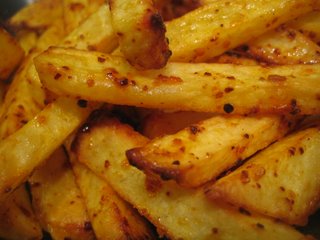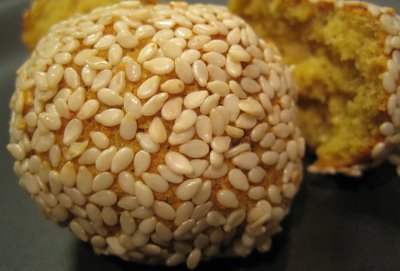Don't laugh.
Don't laugh. I said, don't laugh. We had nut loaf for dinner this evening. When I asked G at lunchtime if he had any dinner requests, he replied :
Nut loaf.I was three quarters sure he was serious, because he is a pretty-much-aside-from-the-odd-steak-vegetarian, but there was the 25% doubt. But I thought sod him,
Don't kid with the chef.So, as any good wife would do I submitted a search request to the google engine for a nut loaf recipe and came up with too many options.
For goodness sake.Why should something supposedly healthy and "better" than a steak be so time-consuming and complicated. Did I really need to blanch cabbage leaves so I could wrap a faux sausage in a green presentation layer? Should I really have thought ahead and sprouted some chickpeas? Let alone knitted my own yoghurt for a garnish? Garnish?!
Not on your nelly.So I parked early at school to pick up the M, walked to the supermarket and bought some mushrooms. Aside from the usual things like eggs ,cheese and nuts, all you really need to make a nut loaf is mushrooms.
That is really nice.Both the ingredient burden and the taste and pleasure in the final result was nice, no, great. In fact the end product was so nice, we - 5 year old included - ate it all so I am cooking the spare one as we type, for lunch tomorrow.
Nut loaf
Adapted from several search results.makes 2 normal sized loaves, each serving 2.5 people (that is two parents and one 5 year old).
1 cup raw pecans
1/2 cup raw cashews
1 onion
500g mushrooms
4 cloves of garlic
1 teaspoon oregano
Port
175g cheese
A handful of parsley leaves
A sprig of fresh sage
1 cup cooked brown rice, 1/2 cup raw then cooked and cooled.
3 eggs
1/2 cup cottage cheese
Preheat oven to 180°c.
To make this recipe easier, get out your food processor. Do not clean between uses.
Put a solid frying pan to heat on medium.
Pulse the nuts to a fine rubble in the food processor and put in a big bowl.
Pulse the onion to mince, and fry in some oil and butter in the pan until slightly golden.
Pulse the mushrooms, garlic and oregano until very small, but not a purée, and add to the pan with the onions. Sauté until looking cooked then add a splash of port. Cook a few minutes longer then turn off the heat.
Pulse the cheese, parsley and sage until rubble.
Add the herby cheese and rice to the nuts, then stir in the mushrooms.
Mix together the eggs and cottage cheese with a load of salt and pepper, but not too much!
Complete the mixture by adding the eggs/cottage cheese to the rest.
Divide the mixture between two baking paper lined loaf tins - or one large one - and bake for one hour.
Cool for a few minutes before serving on a 70s stainless steel plate surrounded by boiled kale (so now, so not!).
Enjoy the leftovers in a soft roll, pretending it is actually meatloaf. But maybe you won't do that.






